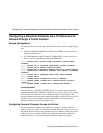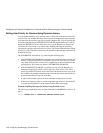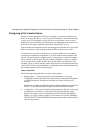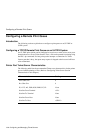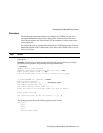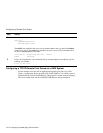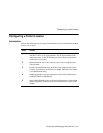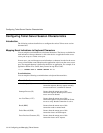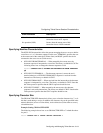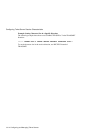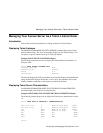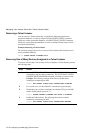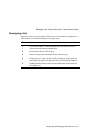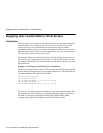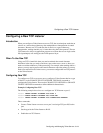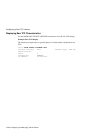
Configuring and Managing Telnet Servers 13-13
Configuring Telnet Server Session Characteristics
Specifying Newline Characteristics
The NEWLINE characteristics allow the person managing the access server to define
a new line as a 1- or 2-character sequence. In this case, TERMINAL specifies the user
at the remote end of the connection (Telnet client) and HOST specifies the device
connected to the access server (Telnet server).
• NEWLINE FROM TERMINAL — When entered by the remote user, the
character sequence is interpreted as a new line. The factory-set default is CR. The
following shows how to change the character sequence to @#:
Local> CHANGE PORT 5 TELNET SERVER NEWLINE FROM TERMINAL
@#
• NEWLINE TO TERMINAL — The character sequence is sent to the user’s
terminal whenever a NEWLINE FROM HOST sequence is received from the
internet host. The factory-set default is CRLF.
• NEWLINE FROM HOST — When received from the internet host, the character
sequence is interpreted as a new line. The factory-set default is CRLF. Note that
the Telnet protocol specifies that the CRLF sequence should be sent.
• NEWLINE TO HOST — When entered by the remote user, the character
sequence is sent to the internet host. The factory-set default is CRLF. Note that the
Telnet protocol specifies that the CRLF sequence should be sent.
Specifying Character Size
The CHARACTER SIZE characteristic allows you to select the character size, 7- or 8-
bit, that is used during a session. In addition, the character size can be specified in the
transmit direction (server to Telnet client), receive direction (Telnet client to server),
or both directions.
Example: Setting CHARACTER SIZE
The following example shows how to set CHARACTER SIZE to 7 in both directions
for port 5:
Local>
CHANGE PORT 5 TELNET SERVER CHARACTER 7
Erase Previous Line (EL) Occurs when the remote user of this
connection issues an EL request.
No operation (NOP) Occurs when the remote user of this
connection issues a NOP command.
Event Indication Description



